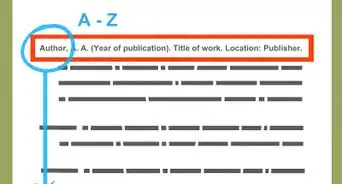This article was co-authored by wikiHow staff writer, Jennifer Mueller, JD. Jennifer Mueller is a wikiHow Content Creator. She specializes in reviewing, fact-checking, and evaluating wikiHow's content to ensure thoroughness and accuracy. Jennifer holds a JD from Indiana University Maurer School of Law in 2006.
There are 9 references cited in this article, which can be found at the bottom of the page.
This article has been viewed 129,673 times.
Learn more...
In some research papers, you may want to reference lecture notes or other handouts from a course or workshop. The point of the citation is to enable your readers to locate the material you referenced in your paper. For lecture notes, this may require contacting the lecturer. While all citations include generally the same information, the format will differ depending on whether you're using the Modern Language Association (MLA), American Psychological Association (APA), or Chicago citation style.
Steps
MLA
-
1Start your full citation with the name of the instructor. List the instructor's last name first, followed by a comma. Then write out their first name. Place a period after the end of the instructor's name.
- Example: Kent, Clark.
- If you're using your own notes from the lecture as a reference, your citation should be to the lecture itself, not to your personal notes. So you'd still use the instructor's name as the "author" of the lecture.
-
2Provide the title of the lecture or presentation. After the instructor's name, include the title of the lecture or presentation in quotation marks. If you are citing a written handout or slide show, use the title provided for that document. Use title-case, capitalizing all nouns, pronouns, verbs, and adverbs. Place a period at the end of the title, inside the closing quotation marks.
- Example: Kent, Clark. "Superheroes in the 21st Century."
- If the lecture doesn't have a specific title, provide a brief, general description of the topic of the lecture.
Advertisement -
3Include the date, name of the course, and name of the university. If you're citing presentation slides or the lecture itself, list the name of the course first, followed by a comma. Provide the date the lecture was given in day-month-year format, then a comma. Type the name of the college or university where the lecture was given, followed by a period.
- Example: Kent, Clark. "Superheroes in the 21st Century." Political Science 230, 27 Feb. 2018, Metropolis University.
- If you're citing a course handout, place the name of the college or university immediately after the name of the course, followed by a period. Use the word "Received" and then provide the date you received the handout in day-month-year format, followed by a period. For example: Kent, Clark. "Superheroes in the 21st Century." Political Science 230, Metropolis University. Received 27 Feb. 2018.
-
4Identify the type of document being cited. For the last piece of your citation, provide a description for the medium used. If you are citing the lecture as a whole, use the word "lecture." Close your citation with a period.
- Lecture example: Kent, Clark. "Superheroes in the 21st Century." Political Science 230, 27 Feb. 2018. Metropolis University. Lecture.
- Handout example: Kent, Clark. "Superheroes in the 21st Century." Political Science 230, Metropolis University. Received 27 Feb. 2018. Class handout.
- Slide presentation example: Kent, Clark. "Superheroes in the 21st Century." Political Science 230, 27 Feb. 2018. Metropolis University. Microsoft PowerPoint Presentation.
-
5Use the instructor's name for in-text parenthetical citations. When you paraphrase or quote the lecture or lecture notes in the body of your paper, place a parenthetical citation at the end of the sentence with the name of the instructor who gave the lecture. If the document includes slide numbers or page numbers, include them. Otherwise, simply use the instructor's name.
- Example with slide number: (Kent, slide 5).
- Example without page or slide number: (Kent).
- If you're citing the lecture itself and working off of your own lecture notes, do not use page numbers.
APA
-
1List the name of the author of the notes, last name first. Write the last name of the person who wrote the lecture notes, followed by a comma. Provide the person's first initial, then type a period. If no author name is stated, use the name of the instructor who gave the lecture. You also have the option of listing the title first, rather than the author's name.[1]
- Example: Lane, L.
-
2Provide the year the notes were taken in parentheses. Type a space after the period that follows the author's name, then type the year the notes were taken or published in parentheses or round brackets. If no date is provided, use the abbreviation "n.d." Place a period outside the closing parentheses mark.[2]
- Example: Lane, L. (2018).
-
3Include the full name of the course or presentation in italics. The "title" of the lecture includes the unit code and name of the course. Place a comma after the name of the course, then type any lecture-specific title or the week of the course when the lecture took place. Use title-case for the name of the class.[3]
- Example: Lane, L. (2018). POLS 230: Alternative Approaches to Crime Fighting, week 6 notes
-
4Add a description of the medium in square brackets. After the title, type a space and then describe the type of document you're referencing. Typically, this will be a slide presentation, class handout, or lecture notes. Place a period after the closing square bracket.[4]
- Example: Lane, L. (2018). POLS 230: Alternative Approaches to Crime Fighting, week 6 notes [lecture notes].
-
5Include a URL, if appropriate. If the instructor or presenter has made their notes available online, type "Retrieved from," then end your citation with a copy of the complete direct URL or permalink. Do not place a period at the end of the URL.[5]
- Example: Lane, L. (2018). POLS 230: Alternative Approaches to Crime Fighting, week 6 notes [lecture notes]. Retrieved from http://library.mu.edu./search/r?SEARCH=pols230
-
6Use the author's last name and the year for in-text citations. When you paraphrase or quote from the lecture notes, place a parenthetical at the end of the sentence with the author's last name and the year the notes were written or published. Place a period outside the closing parentheses mark.[6]
- Example: (Lane, 2018).
- For quotes, include a slide number or page number if available. For example: (Lane, 2018, slide 7).
Chicago
-
1Start your bibliographical citation with the instructor's name. List the instructor's last name first, followed by a comma. Then type the instructor's first name. Place a period at the end of the instructors's first name.[7]
- Example: Kent, Clark.
-
2Provide the title or subject of the lecture in quotation marks. If the lecture has a specific title, use that. If it doesn't, provide a short, basic description of the subject of the lecture. Use title-case, capitalizing all nouns, pronouns, verbs, and adverbs. Place a period at the end of the title or subject, inside the closing quotation marks.[8]
- Example: Kent, Clark. "Superheroes in the 21st Century."
-
3Identify where and when the lecture was given. Type "class lecture," then provide the name of the course, the name of the university, the location of the university, and the date the lecture was given in month-day-year format. Separate these elements with commas. Place a period at the end of the date.[9]
- Example: Kent, Clark. "Superheroes in the 21st Century." Class lecture, Alternative Approaches to Crime Fighting, Metropolis University, Metropolis, New York, February 27, 2018.
-
4Adjust the format and punctuation for in-text footnotes. In footnotes, the instructor's name appears in first name-last name format, followed by a comma. Provide the title of the lecture in quotation marks with no other punctuation. Include information about when and where the lecture was given in parentheses. Place a period after the closing parentheses mark.[10]
- Example: Clark Kent, "Superheroes in the 21st Century" (class lecture, Alternative Approaches to Crime Fighting, Metropolis University, Metropolis, New York, February 27, 2018).
Community Q&A
-
QuestionWhat if the lecture does not have a name?
 wikiHow Staff EditorThis answer was written by one of our trained team of researchers who validated it for accuracy and comprehensiveness.
wikiHow Staff EditorThis answer was written by one of our trained team of researchers who validated it for accuracy and comprehensiveness.
Staff Answer wikiHow Staff EditorStaff AnswerGenerally, if the lecture doesn't have a specific title, you would write a brief description of the topic of the lecture instead. For some citation styles, use the course name instead of the lecture name.
wikiHow Staff EditorStaff AnswerGenerally, if the lecture doesn't have a specific title, you would write a brief description of the topic of the lecture instead. For some citation styles, use the course name instead of the lecture name. -
QuestionWhat if there are 2 lecturers
 wikiHow Staff EditorThis answer was written by one of our trained team of researchers who validated it for accuracy and comprehensiveness.
wikiHow Staff EditorThis answer was written by one of our trained team of researchers who validated it for accuracy and comprehensiveness.
Staff Answer wikiHow Staff EditorStaff AnswerIf there are 2 lecturers, list both of their names following the rules for multiple authors in the guidelines for the citation style you're using. List their names either following the order in which they spoke, or the order listed on a handout or other brochure for the lecture.
wikiHow Staff EditorStaff AnswerIf there are 2 lecturers, list both of their names following the rules for multiple authors in the guidelines for the citation style you're using. List their names either following the order in which they spoke, or the order listed on a handout or other brochure for the lecture.
Warnings
- For some types of research projects, lecture notes may not be considered an acceptable source. If you can't find source that provides similar information, discuss the matter with your instructor or supervisor before using them.[11]⧼thumbs_response⧽
References
- ↑ https://columbiacollege-ca.libguides.com/apa/classnotes
- ↑ https://guides.himmelfarb.gwu.edu/APA/lecture
- ↑ https://researchguides.njit.edu/ieee-citation/lecturenotes
- ↑ https://www.library.mun.ca/researchtools/guides/citations/turabianstyle/notes-bibliography/other/
- ↑ https://guides.himmelfarb.gwu.edu/APA/lecture
- ↑ https://ecu.au.libguides.com/referencing/in-text-citations
- ↑ https://www.strose.edu/wp-content/uploads/2015/08/Citing-a-Class-Lecture1.pdf
- ↑ https://www.strose.edu/wp-content/uploads/2015/08/Citing-a-Class-Lecture1.pdf
- ↑ https://www.strose.edu/wp-content/uploads/2015/08/Citing-a-Class-Lecture1.pdf.pdf
About This Article
To cite lecture notes using APA style, start with the last name of the author of the notes, followed by a comma, then the first letter of their first name, followed by a period. Next, include the year the notes were taken in parentheses before writing the title of the presentation in italics. For example, you could write, Lay, L. (2018). POLS 230: Alternative Approaches to Crime Fighting. Then, describe the type of document you're referring to in square brackets, such as a slide presentation or lecture notes. For tips on how to use in-text citations and how to use MLA or Chicago styles, read on!
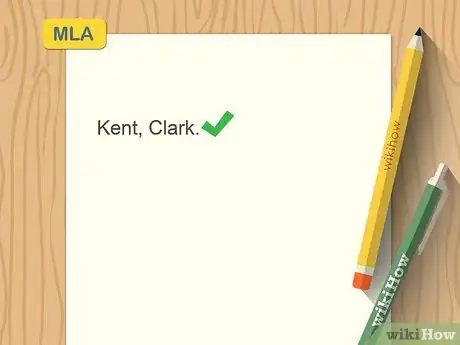



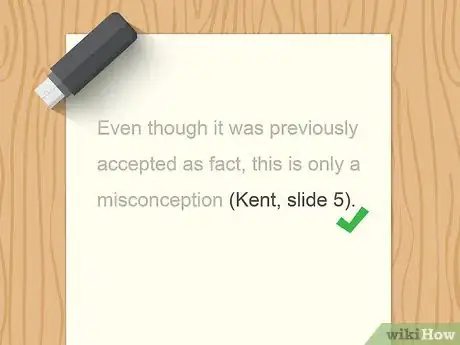
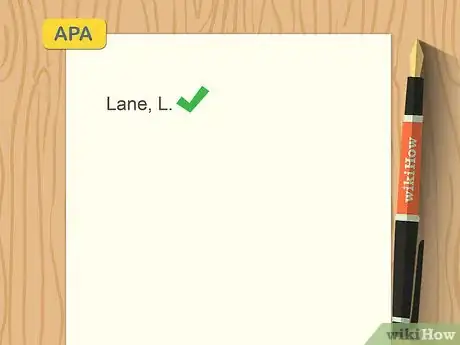
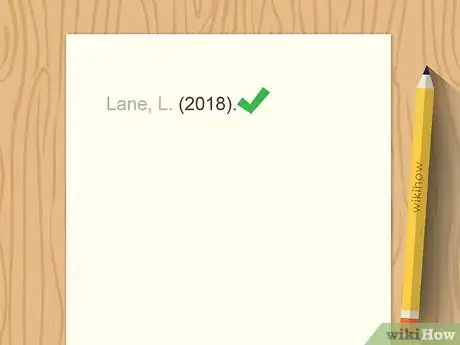

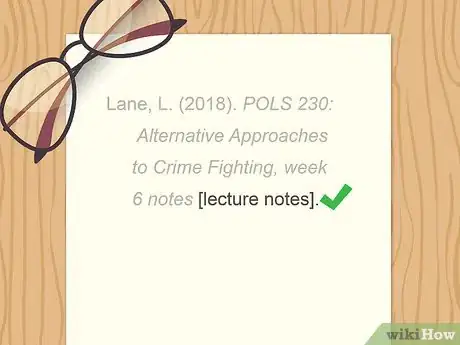
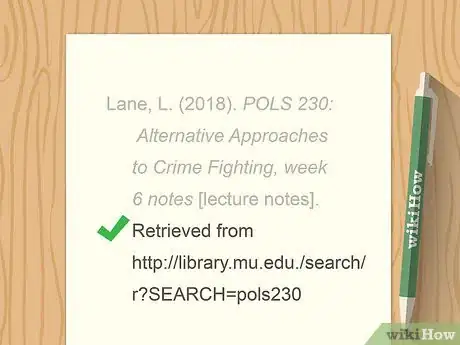
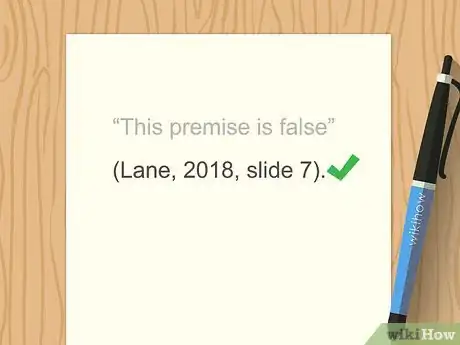
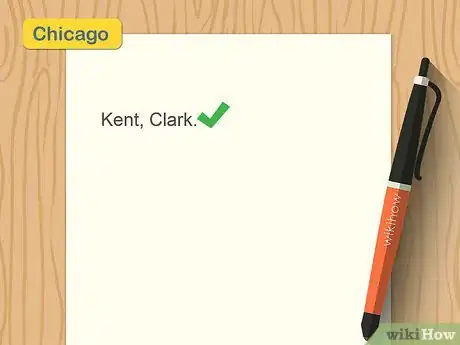









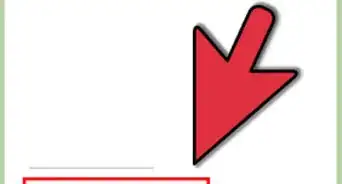



-Step-18.webp)

